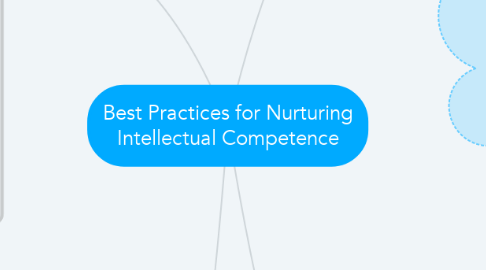
1. English Language Lerners
1.1. Best Practices
1.1.1. By first addressing social-emotional needs,
1.1.2. students are able to progress intellectually
1.1.3. Provide opportunities for peer collaboration
1.2. Diverse Learning Needs
1.2.1. Build on Learner Strengths
1.2.2. Concrete sequential: Teach to senses in sequence
1.2.3. Abstract sequential: Teach concept/ideas in sequential/linear manner
1.2.4. Abstract and random: Teach concept/ideas in non-sequential manner
1.3. Strategies for Differentiation
1.3.1. Teach subject specific language
1.3.2. Multi-level text options to read on their level.
1.3.3. Pictures
1.3.4. Visuals
1.3.5. Breaking assignments into smaller parts
1.3.6. Choice Boards
1.4. Incorporating Multiple Intellegences into curriculum
1.4.1. Charts/grids – visual
1.4.2. Collecting objects from natural world and learning about them – Naturalist
1.4.3. Musical – singing, chants
1.5. Social Development Theories
1.5.1. Aquisitionist
1.5.2. Interactionist
2. Children from Poverty
2.1. Best Practices
2.1.1. Social-emotional skills are the essential
2.1.2. By first addressing social-emotional needs,
2.1.3. students are able to progress intellectually
2.1.4. Develop relationship building skills
2.1.5. Provide opportunities for peer collaboration
2.2. Diverse Learning Needs
2.2.1. Develop social and emotional skills
2.2.2. Develop intrapersonal and interpersonal skills
2.2.3. Set up environment of adult relationships
2.2.4. Nurture healthy peer relationships
2.3. Strategies for Differentiation
2.3.1. Print options rather than digital
2.3.2. Opportunities after or before school to finish assignments
2.3.3. Providing background knowledge
2.4. Incorporating Multiple Intellegences into curriculum
2.4.1. Intrapersonal and Interpersonal skills to improve low self-esteem
2.4.2. Group project problem solving
2.4.3. Musical – singing, chants
2.4.4. Field Trips and hands on activities - kinesthetic
2.5. Social Development Theories
2.5.1. Constructivism
3. Exceptional Lerners
3.1. Best Practices
3.1.1. Develop and adhere to Educational Plans
3.1.2. Document Accomodations
3.1.3. Utilize Student centered thematic units
3.1.4. Pre and post assessments
3.1.5. Safe and Inclusive environment
3.2. Diverse Learning Needs
3.2.1. Be aware of disabilities
3.2.2. Recognize the 8 categories
3.3. Strategies for Differentiation
3.3.1. Group with shared interest and abilities
3.3.2. Utilize assessments regularly
3.3.3. Scaffold regularly
3.3.4. Recognize strengths and weaknesses
3.3.5. MTSS
3.4. Incorporating Multiple intelligences into curriculum
3.4.1. Thematic units
3.4.2. Multiple modalities
3.4.3. kinesthetic activités
3.5. Social and Development Theories that influence Curricular Decisions
3.5.1. Behaviorism
3.5.2. Cognitivism
4. Gifted and Talented Learners
4.1. Best Practices
4.1.1. Utilize Educational Plans
4.1.2. Incorporate intelligences into curriculum
4.1.3. Make documented accommodations
4.1.4. Utilize Student centered thematic units
4.1.5. Pre and post assessments
4.1.6. Safe and Inclusive environment
4.2. Diverse Learning Needs
4.2.1. Be certain of high and low achievers
4.2.2. Behavior is communication
4.3. Strategies for Differentiation
4.3.1. Enrichment through technology
4.3.2. Most difficult first when mastery is shown
4.3.3. Give students control on how they present what they know
4.3.4. Monitor and group based on ability
4.4. Incorporating Multiple Intelligences into curriculum
4.4.1. Project based Learning
4.4.2. Multiple modalities
4.4.3. Technology
4.4.4. Rigorous Curriculum Design based on Standards
4.5. Social and Development Theories that Influence Curricular Decisions
4.5.1. Connectivism
4.5.2. Constructivism
